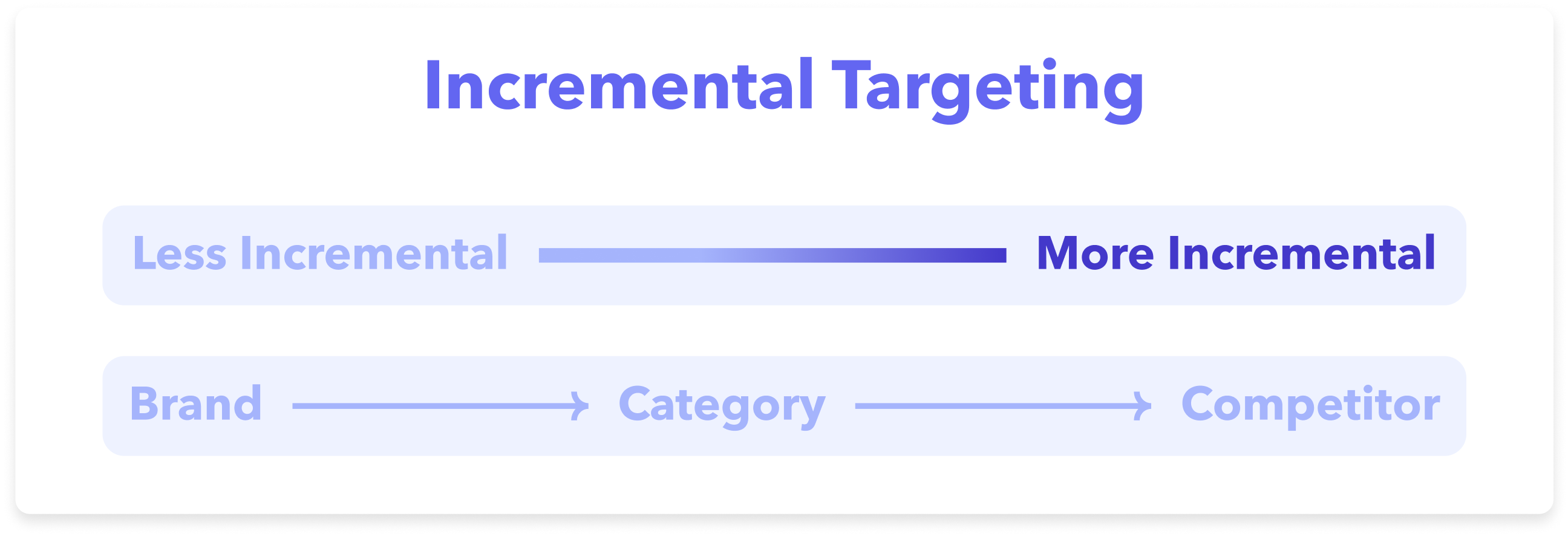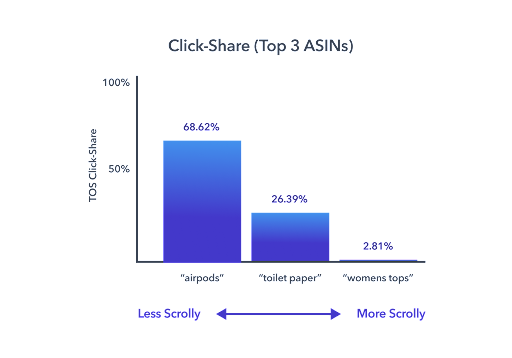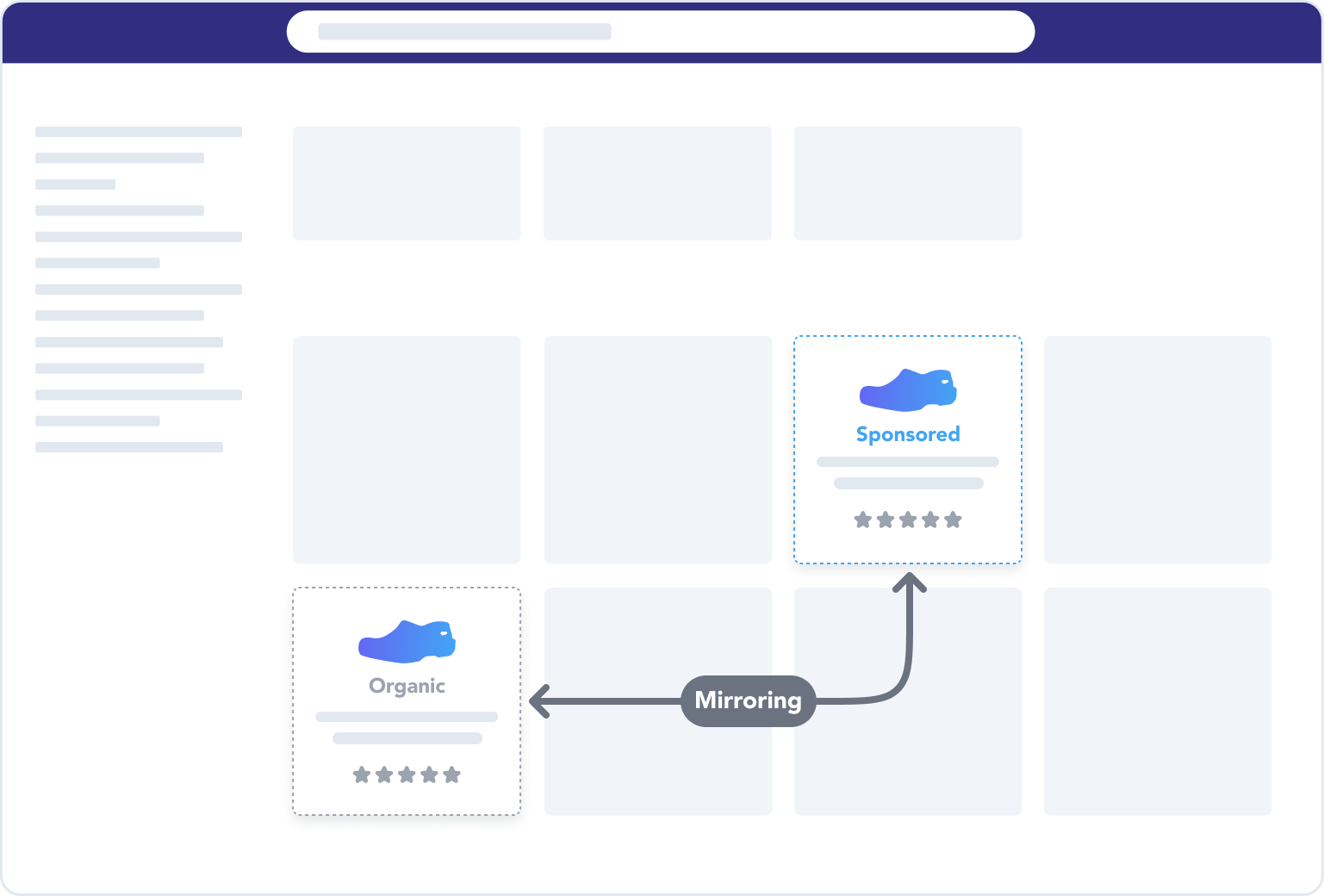
What is incrementality?
Martin Saunders, May 24, 2023
Attributed sales, ROAS and ACoS are often the primary metrics advertisers use to measure the performance of their ads. And for good reason—they provide important information on overall advertising impact and efficiency.
But these metrics don't tell the complete story, and leave a couple of important questions unanswered: Would you have gotten those ad-attributed sales anyways? And how much of an impact is your ad strategy really having? Incrementality helps advertisers answer those questions.
Defining incrementality
Incrementality is a strategy that emphasizes making ad investments that will bring in sales that would not have occurred otherwise. The idea that some ad targets are more incremental than others rests on the idea that different traffic has different values.

For example, the shoppers represented by branded-search traffic are already considering your product line and are therefore deep in your sales funnel. Generally speaking, branded traffic has a lower chance of being incremental because the shopper is already highly likely to purchase a product from you.
The shoppers represented by category-search traffic, on the other hand, are further up in the sales funnel and haven’t yet settled on a brand. Because the shopper could purchase from any brand in the category, their sale is naturally more likely to be an incremental sale than one that resulted from a branded search. The reason for this is someone searching at the category level—one of the most competitive—doesn’t have any affinity for your brand. That’s something you would have to achieve with an advertisement.
To bring in incremental sales with your ads, you need to match incremental search terms to the right products. Let’s take a closer look at how to do this.
How to harness incrementality to drive ad performance
Incrementality drives efficiency and builds your customer base by matching search terms with high incremental potential to high-performing products that meet the shopper search intent. Let’s look at how this works in practice.
Match the right search terms with the right products
As we’ve covered, not all search terms are created equal. Some are inherently more likely than others to bring in an incremental sale. Using Amazon's Search Term Report in Brand Analytics, you can identify category or competitor search terms that have some of the following qualities:
High volume and search frequency rank: if you're making a targeted investment for a small group of highly-strategic keywords, then you want to make sure they’re high-volume; there’s no point in going after a small set of keywords if they don't get much traffic
Scrolliness: aim for search terms where the top 3 ASINs capture a large percentage of the click share
Click-through rate: a high click-through rate is an indication that the search term is relevant to your products

Once you’ve identified the search terms with high potential, you need to decide the products you want to advertise. When it comes to incrementality, there may be dramatic differences in performance between different products on the same search term. Here’s what to consider:
Competitiveness: the product needs to sell—at a minimum it should have a 4-star rating, at least 8 reviews, and be price competitive with the products that rank in the top three for click share for the search term you’ll be targeting
Relevance: make sure the product is a good match with shopper search intent
Organic rank: if a product currently ranks low organically then there is more opportunity to gain incremental sales since the chances a shopper would have seen this product without the support of an ad is low
Profitability: assuming you have multiple products that are equally relevant and competitive, picking the most profitable product to promote will maximize your returns
Use top-of-search multipliers to drive incremental sales
Once you’ve matched your search term with a suitable product to advertise, we recommend using a top-of-search (TOS) multiplier for high incrementality targets. A TOS multiplier allows you to increase your bids by up to 900% above the default bid for TOS ad placements.
Data from our Q1 2023 North American Benchmark Report indicate that TOS placements have higher click-through and conversion rates and a lower ACoS, compared to Rest of Search (ROS) and Product Detail Page (PDP) placements.
Placement | Metric | Click-through rate | Conversion rate | ACOS |
|---|---|---|---|
Product Detail Page | 0.13% | 6.7% | 40.9% |
Rest of Search | 0.79% | 8.7% | 31.8% |
Top of Search | 4.41% | 13.8% | 27.0% |
There is one caveat, however. If your advertised product is in the top 4 for organic rankings, bidding aggressively on the TOS placement is likely to result in “mirroring.” That is, it’s likely to lead to your product being shown twice in the first two rows of the search results—once in the TOS Sponsored Products placement, and once in the organic placements. The result of mirroring is often cannibalization, when a sale that would have happened organically occurs via a paid ad.

If mirroring is happening, it doesn’t mean that you need to stop all ad spend on that keyword. Instead, you want to drop your bid so that you’re still winning ad placements, just not TOS. To do this, we recommend putting the advertised product into a new campaign and setting the TOS multiplier at 0 while keeping bids unchanged on ROS and PDP.
Conclusion
Some of the highest-value sales for an advertiser are those that wouldn’t have happened without an ad interaction. Including incrementality in your advertising strategy leverages the potential of high-value traffic, targeting it with TOS ad placements that connect the shopper to a product that is likely to meet their needs. The resulting sales will increase the size of your customer base and maximize ad spend efficiency, a win-win for every advertiser.
To get started or learn more about how Perpetua can help you scale your Amazon Advertising business, contact us at hello@perpetua.io